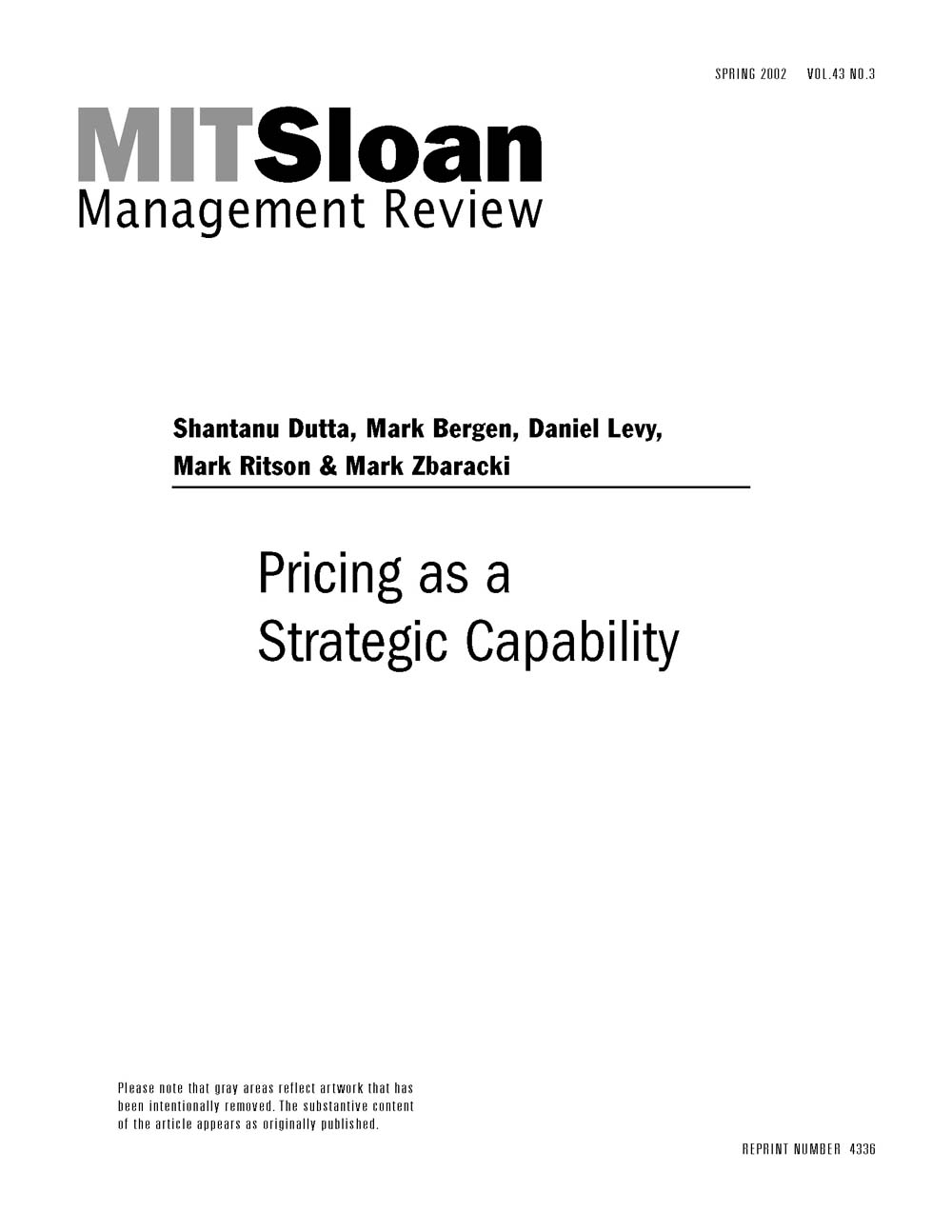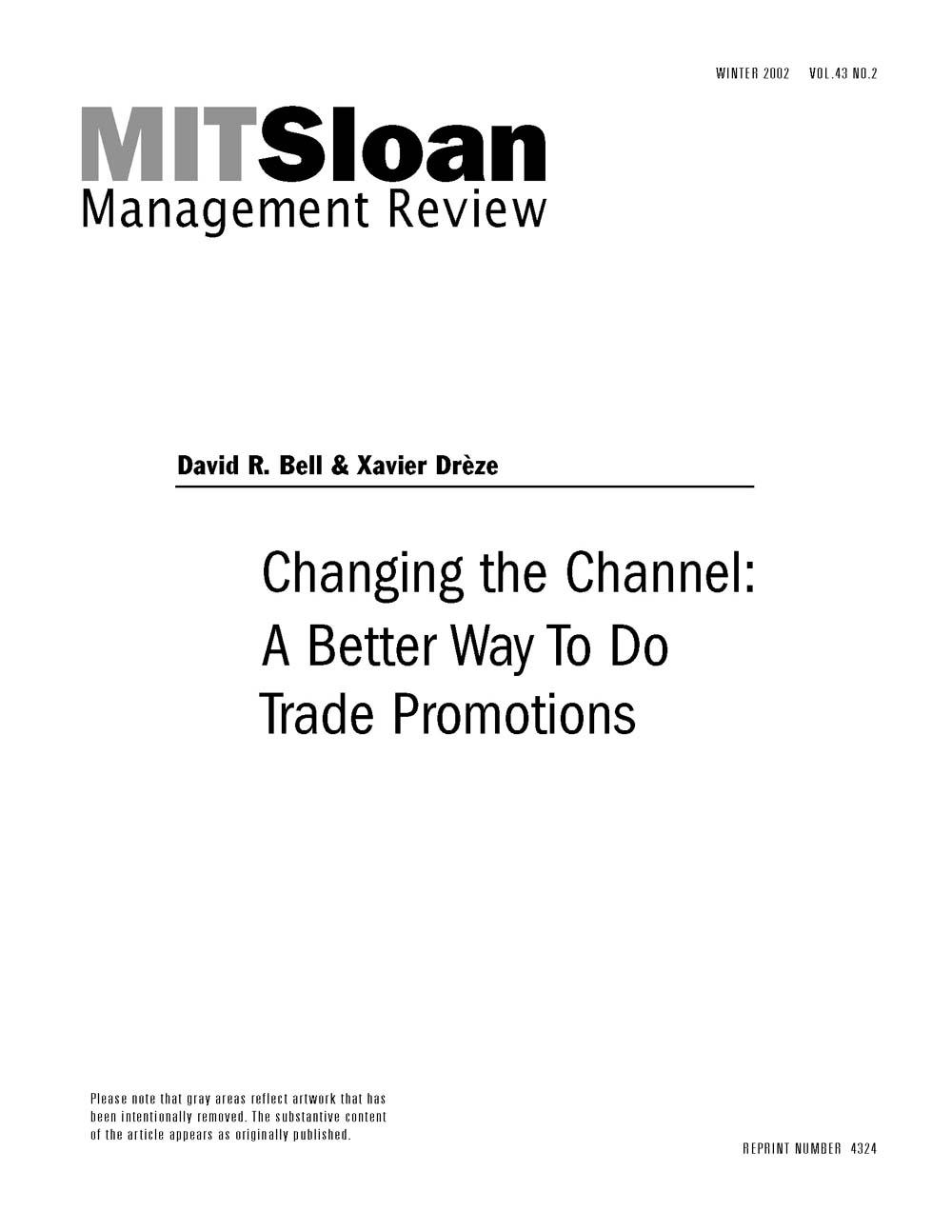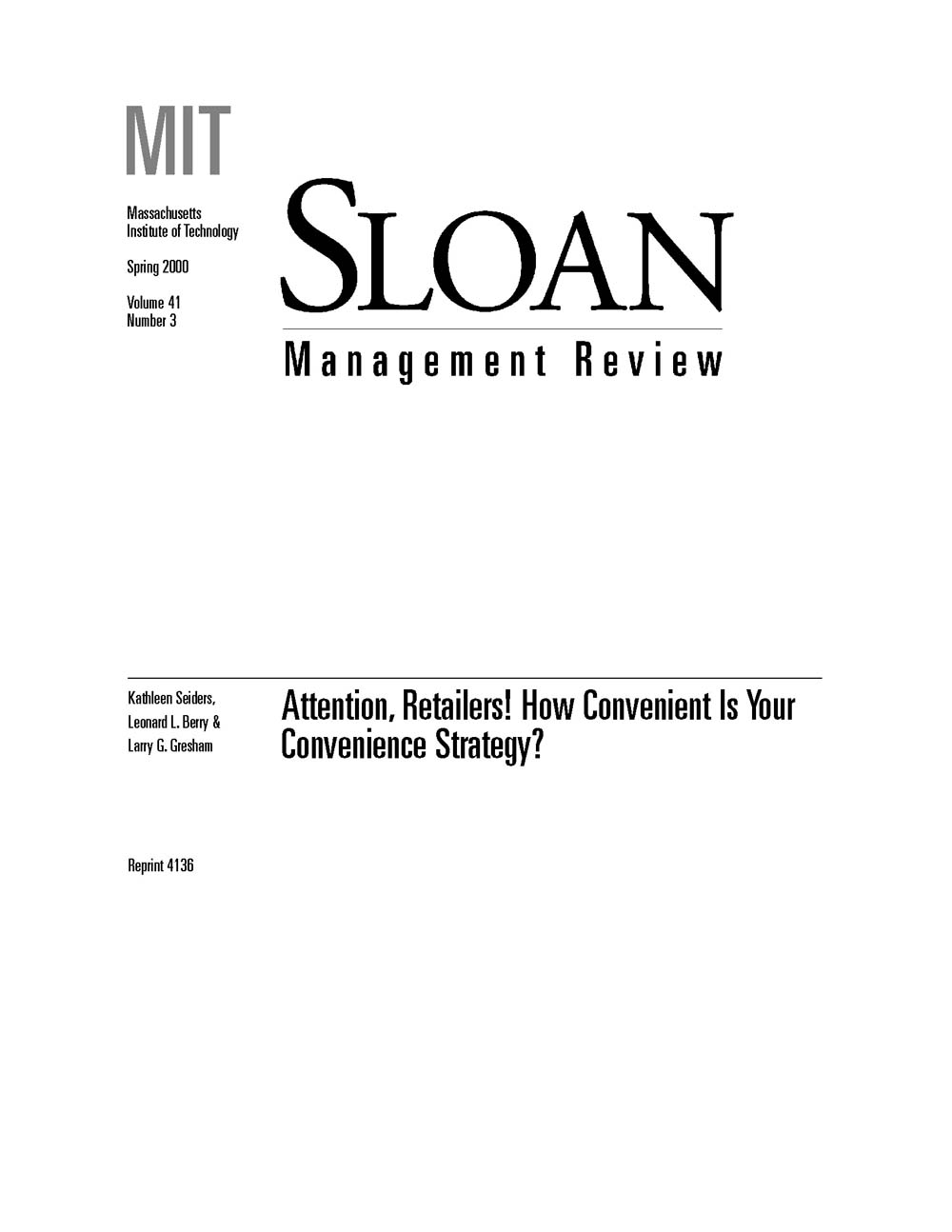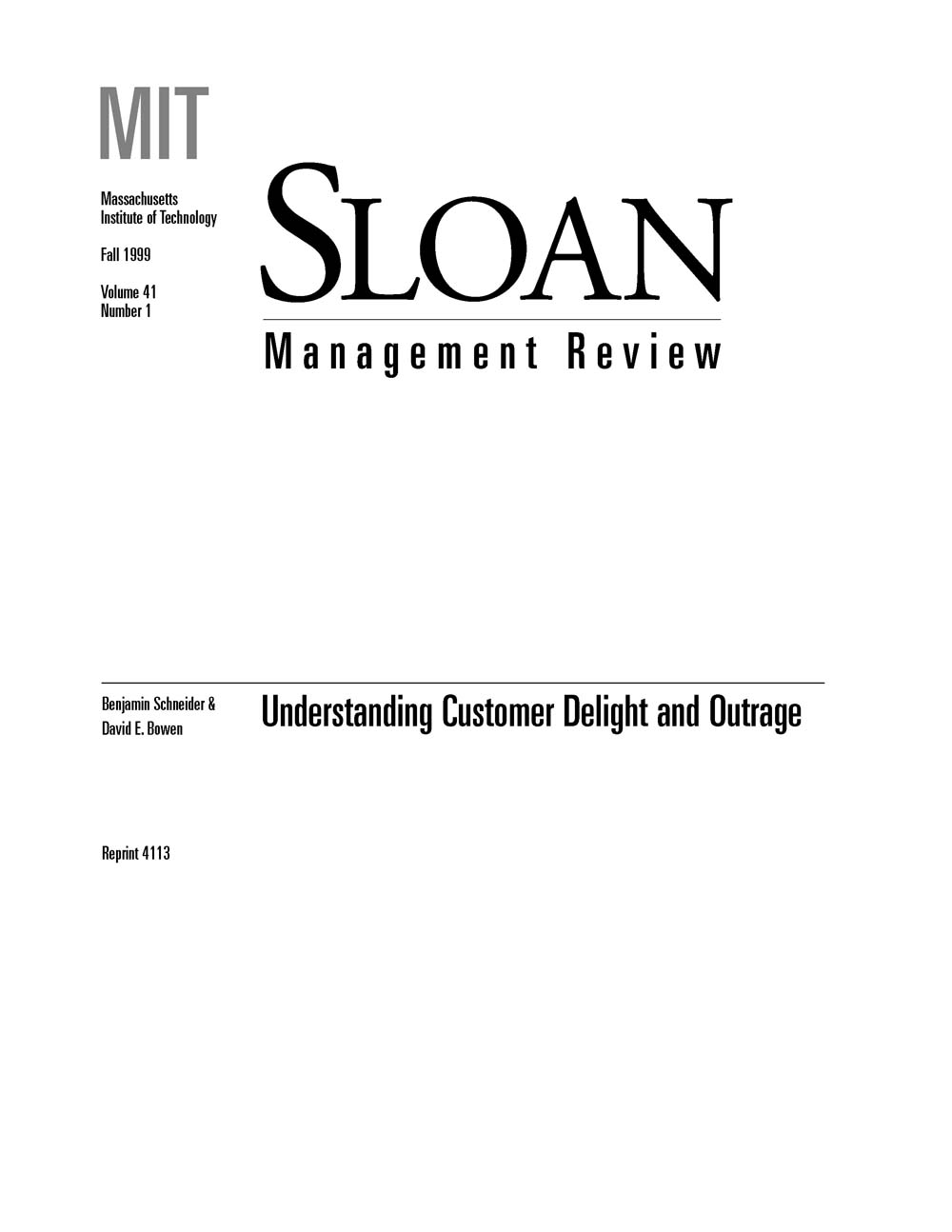Managers' opinions vary about the goals and value of Internet marketing.
Marketing
Page 21 of 23
-
Surprise as a Marketing Tool
Customer delight might not always lead to long-term satisfaction and loyalty.
-
Pricing as a Strategic Capability
If pricing isn't a strategic capability — a contributor to a company's ability to implement its strategy — it's probably a strategic liability.
-
Changing the Channel: A Better Way To Do Trade Promotions
In theory, trade promotions should benefit everyone involved. In practice, however, manufacturers and retailers often use trade promotions as weapons in a zero-sum game, and consumers are sometimes left out altogether. It need not be that way. Over the past three years, David Bell, an associate professor of marketing at the University of Pennsylvania’s Wharton School, and Xavier Dr_ze, a visiting assistant professor of marketing at UCLA’s Anderson School, have examined the theoretical and practical problems associated with trade promotions, and they explain how the right kind of deal can be created & #8212; a transparent system that generates mutual trust and provides benefits to both manufacturers and retailers. The key is proper implementation of what is thus far a little understood tool: the pay-for-performance trade promotion, in which retailers get rewarded according to how much they sell, not how much they buy. The authors explain how the most accepted way of doing promotions today & #8212; which rewards retailers for effective buying rather than effective marketing & #8212; creates a variety of inefficiencies that drain resources from their intended purpose. Using a hypothetical case involving much-simplified mathematics, they go on to demonstrate how manufacturers can design pay-for-performance options that retailers can embrace. They also illustrate how one national beverage company made pay-for-performance deals work in practice. Finally, they offer practical advice to help senior managers rethink the elements of organizational culture that stand in the way of a more effective approach to trade promotions & #8212; and, by extension, block better, more profitable relationships all along the channel.
-
The Real Value of Customer Loyalty
Customer-lifetime value is more than a metric; it's a way of thinking and of doing business.
-
How Much Will People Pay for That?
A new, easy-to-use procedure can help marketers determine customers' willingness to pay.
-
Attention, Retailers! How Convenient Is Your Convenience Strategy?
Many retailers proudly declare their commitment to customer convenience. However, few define convenience from the customer's point of view or systematically craft a convenience strategy. Confronting more retail options than ever, customers value speed and ease at every stage of the retail transaction. Pressed for time, they place a premium on such store features as one-stop shopping, clearly marked aisles, in-stock merchandise, clearly presented pricing, sufficient staffing, efficient checkouts, expanded hours, and easy returns. The retailer that meets these needs and spares its customers needless delays wins their loyalty and outperforms the competition. Some high-performing retailers demonstrate genuine respect for customers' time and effort by viewing the retail experience as an integrated whole consisting of distinct but related parts. These stores enhance the convenience of their market offerings in four main ways: by ensuring that the store's services and products are easy to reach, by enabling customers to speedily identify and select the products they want, by making it easy for customers to obtain desired products, and by expediting the purchase and return of products. The authors cite many real-life examples, including Walgreen, Staples, LensCsrafters, Dell, L.L. Bean, and Dial-A-Mattress, which demonstrate the innovative ways companies address forms of convenience. For example, access considerations may include physical location, parking, store hours, proximity to other stores, and telephone and Internet access. Intelligent store design and layout, knowledgeable salespeople, customer interactive systems, and clear signage are also critical aids in expediting the shopping experience. In regard to providing what a customer wants, in-stock merchandise, timely production, and timely delivery are relevant factors. Self-scanning at checkout counters, drive-through windows, and purchase guarantees are among the ways that retailers can make it easy for customers to complete or adjust their purchases. The most successful retailers invest in all four forms of convenience.
-
Understanding Customer Delight and Outrage
Evidence indicates that satisfied customers defect at a high rate in many industries. Because satisfaction alone does not translate linearly into outcomes such as loyalty in terms of purchases, businesses must strive for 100 percent, or total, customer satisfaction and even delight to achieve the kind of loyalty they desire. Current studies attribute a higher degree of emotionality to the dissatisfaction end of the satisfaction continuum than in the past. For example, customers who have experienced service failures feel annoyed or victimized. Although victimization is felt at a deeper emotional level than irritation, both can result in outrage. By focusing on more intense customer emotions, such as outrage and delight, the authors explore the dynamics of customer emotions and their effect on customer behavior and loyalty. Schneider and Bowen base their conceptualization on people's needs rather than the more conventional model that focuses on customer expectations about their interactions with a firm. The authors propose a complementary needs-based model for service businesses that assumes customer delight and outrage originate with the handling of three basic human needs -- security, justice, and self-esteem. By recasting a situation as one that has violated any of a customer's fundamental needs, the deeper emotional outcome (e.g., outrage) does not seem incongruous. The authors describe each need and offer specific managerial tactics for avoiding outrage and creating delight. Recent emphasis on relationship marketing -- that is, attracting, developing, and retaining customers -- is pertinent because building relationships requires that companies view customers as people first and consumers second. Service is an exchange relationship in which customers swap their money and loyalty for what Schneider and Bowen argue is need gratification -- a psychological contract with service firms to have their needs gratified. The authors discuss strategies that help firms gratify and, in some cases, delight customers, while avoiding the perception that they do not respect customer needs. Companies must manage how they show concern for customer needs in all actions, including the activities of the back office (e.g., billing, shipping), not just front-office personnel who directly contact the customer.
-
Winning in Smart Markets
Smart markets, or markets defined by frequent turnover in the general stock of knowledge or information embodied in products and possessed by competitors and consumers, are based on new kinds of products, competitors, and customers. As a result, companies seek to understand the degree to which their own capabilities and motivations as information-processing "organisms" are crucial in enabling them to extract maximum value from their customer information assets. Firms that have gained a significant competitive advantage are distinguished by their ability to see beyond their IT infrastructure and view information itself as the core asset and the management of information as the company's main priority. Understanding how consumers are adapting their behavior to the demands of an increasingly information-intensive environment has been a starting point for companies that have achieved success in smart markets. By observing the activities of these firms across industries, it is possible to identify generic strategies and develop a preliminary taxonomy, or categorization scheme, that can be used to compare and contrast them. The placement of individual strategies within a conceptual framework guides managers in making customer-management decisions. The organizing tool, or asset around which the full range of strategies is based, is the customer information file (CIF) -- a single virtual database that captures all relevant information about a firm's customers. Underlying the notion of the CIF as the key asset is the assumption that the firm's operational goal is to maximize communication with its customers -- to look for every opportunity to "talk" with them. After all, the data collected from these interactions are the raw material from which companies craft their information-intensive strategies. A company thus sets as its main objective the maximizing of returns to the CIF. It then chooses any one of several strategies to accomplish that objective. This approach represents a shift in performance goals. In particular, concepts such as profitability or market share per product are being replaced with concepts such as profitability per customer (sometimes referred to as "lifetime value of a customer") or customer share (the total share of a customer's purchases in a broadly defined product category).








